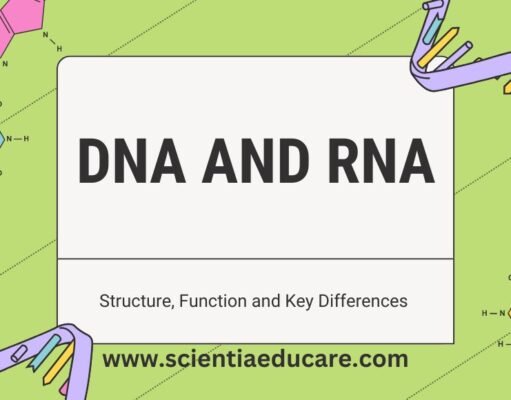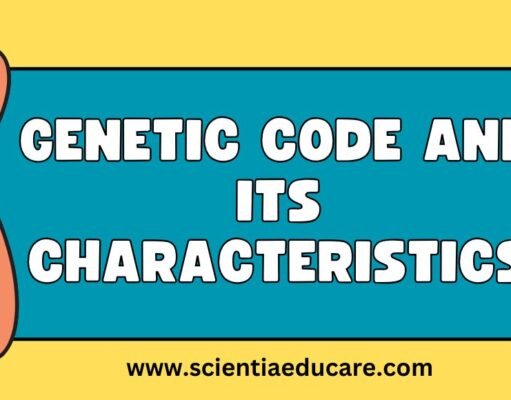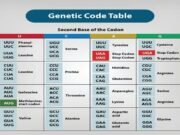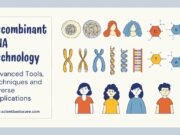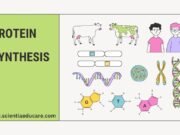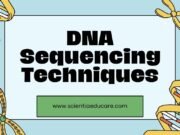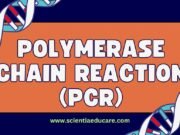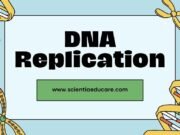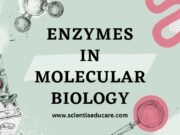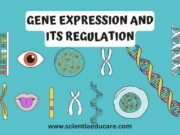Genetically Modified Organisms (GMOs): Benefits and Risks
Genetically Modified Organisms (GMOs): Advantages, Risks and Ethical Dilemmas in Modern Science
Introduction
Genetically Modified Organisms (GMOs) are organisms whose genetic material has been altered using...
DNA vs. RNA: Structure and Function Differences
Introduction
DNA (Deoxyribonucleic Acid) and RNA (Ribonucleic Acid) are fundamental molecules in the biological systems of all living organisms. These nucleic acids play critical roles...
Understanding Transcription and Translation: The Language of Life Simplified
Introduction
The processes of transcription and translation are fundamental to life as they convert the information encoded in DNA into proteins, which perform virtually every...
Mutations: Types and Genetic Implications
Introduction
Mutations are fundamental changes in the genetic material (DNA or RNA) of an organism. They can occur in both somatic and germ cells and...
Questions with Answers on “Genetic Code: Universal and Degenerate Features”
1. What is the genetic code, and why is it essential for protein synthesis?
Answer:The genetic code is the set of rules by which the...
Study Notes on “Structure and Function of Ribozymes”
Ribozymes: The Enzymatic RNA Molecules and Their Essential Roles in Biological Processes
Introduction
Ribozymes, also known as catalytic RNAs, are RNA molecules capable of catalyzing biochemical...
The Genetic Code: Exploring Universal and Degenerate Features
Introduction
The genetic code is a set of rules that defines how the sequence of nucleotides in mRNA is translated into a sequence of amino...
Questions with answers on DNA Replication: Mechanism and Enzymes Involved
Describe the role of helicase in DNA replication and explain how it works.
Answer:
Helicase is an essential enzyme that unwinds the DNA double helix...
Recombinant DNA Technology: Tools, Techniques and Applications
Recombinant DNA Technology: Advanced Tools, Techniques and Diverse Applications
Introduction
Recombinant DNA (rDNA) technology is a groundbreaking technique in molecular biology that allows scientists to manipulate...
Protein Synthesis: Steps of Translation and Role of Ribosomes
Protein Synthesis: The Intricate Steps of Translation and the Crucial Role of Ribosomes
Introduction
Protein synthesis is a fundamental biological process that enables cells to produce...
Questions with answers on the topic “Transcription and Translation Processes Simplified”
1. What is transcription, and how does it occur in prokaryotic and eukaryotic cells?
Answer:Transcription is the process by which an RNA molecule is synthesized...
DNA Sequencing Techniques: Sanger vs. Next-Generation
Comprehensive Analysis of DNA Sequencing Techniques: A Comparative Study of Sanger Sequencing and Next-Generation Sequencing (NGS)
Introduction
DNA sequencing is a fundamental tool in genomics, enabling...
Polymerase Chain Reaction (PCR): Principle and Applications
Polymerase Chain Reaction (PCR): A Comprehensive Study on Its Principle, Steps and Applications
Introduction to PCR
Polymerase Chain Reaction (PCR) is a revolutionary molecular biology technique...
DNA Replication: Process, Enzymes and Significance
DNA Replication: Mechanisms, Key Enzymes and Biological Significance
Introduction to DNA Replication
DNA replication is a fundamental biological process that ensures the accurate transmission of genetic...
Enzymes in Molecular Biology: Types, Functions and Mechanisms
Enzymes in Molecular Biology: Types, Functions, and Mechanisms Explained
Introduction
Enzymes play a crucial role in molecular biology by catalyzing various biochemical reactions essential for life....
Questions with answers on “Mutations: Types and Genetic Implications”
1. What is a mutation? Discuss the various causes of mutations.
Answer: A mutation is a permanent change in the DNA sequence that makes up...
MCQs with Answers on “RNA Splicing and Alternative Splicing Mechanisms”
1. What is RNA splicing?
A. Joining of DNA strands
B. Removal of introns and joining of exons
C. Addition of poly-A tail
D. Removal of exons and...
Study Notes on “Proteomics: Techniques and Applications”
Proteomics: Deciphering the Protein Universe
Introduction
Proteomics is the large-scale study of proteins, including their structures, functions, interactions, and dynamics. Proteins play a pivotal role in...
Gene Expression and Its Regulation: Operon Model
Gene Expression and Its Regulation: Understanding the Operon Model and Epigenetics
Introduction
Gene expression is a fundamental biological process that allows cells to produce proteins and...
Study Notes on “Role of Histones in DNA Packing”
Study Notes on the "Role of Histones in DNA Packing: Unraveling the Chromatin Structure"
Introduction
Histones are fundamental proteins that play a critical role in the...


